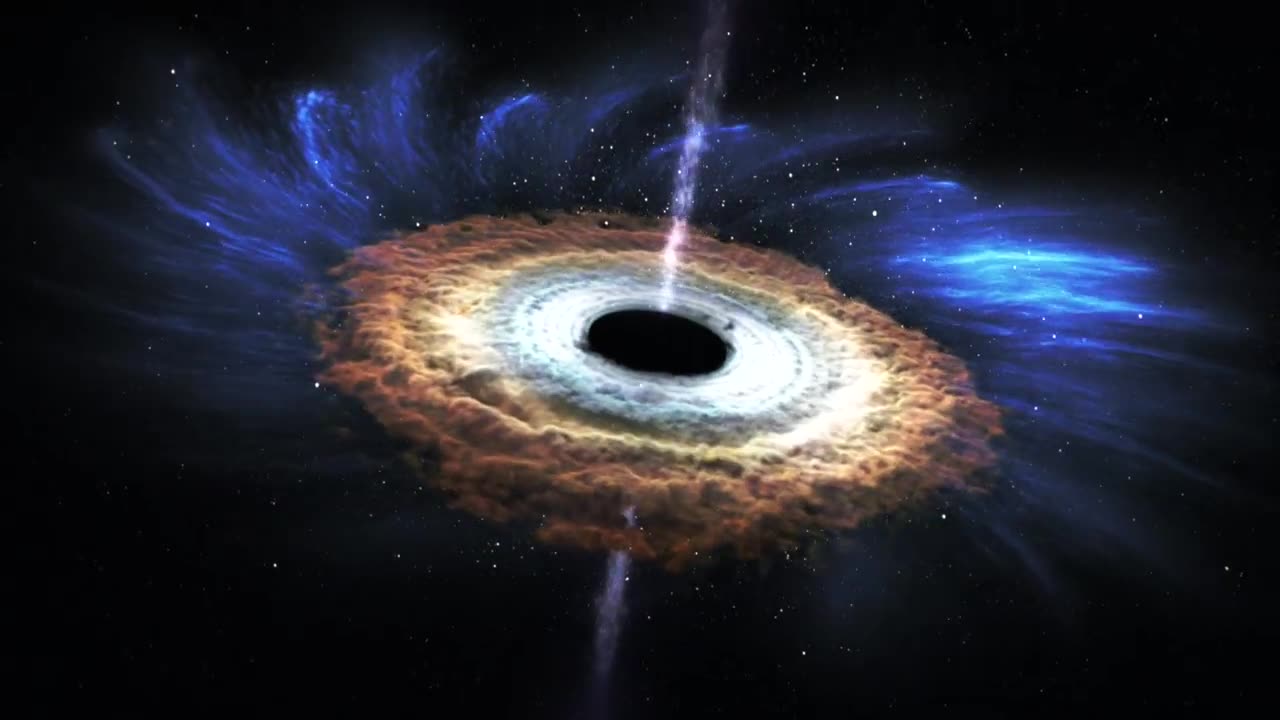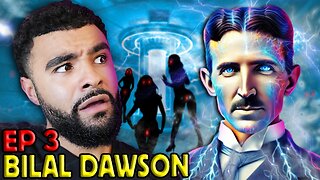Premium Only Content

NASA | Massive Black Hole Shreds Passing Star
NASA | Massive Black Hole Shreds Passing Star
6.2M views · 7 years ago...more
NASA Goddard
1.52M
Subscribe
17K
Share
Save
Report
Comments906
David John
You can tell it is fake because you cannot hear music in space.
Up next
1:31
Supermassive Black Holes on a Collision Course (ESOcast 246 Light)
European Southern Observatory (ESO)•94K views
11:55
Mairaj e Nabi PBUH Aur Black Hole Ka Quran Main Zikar II What Quran Says About Black Hole
Voice Daily•4.2M views
1:21
Peeking at a Distant Moon-Forming Disc (ESOcast Light 240)
European Southern Observatory (ESO)•104K views
4:55
What If You Fell Into a Black Hole?
What If•13M views
4:11
| : gymnopédie au clair de lune - Giovanni Vetrano & Aurora Tresa
Giovanni Vetrano•15K views
0:50
An echo of light
Jaja•9.7K views
1:33
Nasa footage shows how terrifyingly vast black holes are
The Independent•43K views
3:35
Return to the Moon with Orion
ATG Europe•1.5M views
4:36
Artemis-1 - NASA Animation (Version 2)
Matthew Cable•321K views
0:21
Interstellar Black Hole in Unreal Engine
Ammar Keshta•52K views
3:17
(LAST JEDI) Walking on the Moon with (PlayStation VR Headset) Apollo 11 experience
LAST JEDI•16M views
10:55
This is How First Humans Will Survive on Mars
Zem TV•4.8M views
Description
NASA | Massive Black Hole Shreds Passing Star
NASA Goddard
17K
Likes
6,270,996
Views
2015
Oct 21
This artist’s rendering illustrates new findings about a star shredded by a black hole. When a star wanders too close to a black hole, intense tidal forces rip the star apart. In these events, called “tidal disruptions,” some of the stellar debris is flung outward at high speed while the rest falls toward the black hole. This causes a distinct X-ray flare that can last for a few years. NASA’s Chandra X-ray Observatory, Swift Gamma-ray Burst Explorer, and ESA/NASA’s XMM-Newton collected different pieces of this astronomical puzzle in a tidal disruption event called ASASSN-14li, which was found in an optical search by the All-Sky Automated Survey for Supernovae (ASAS-SN) in November 2014. The event occurred near a supermassive black hole estimated to weigh a few million times the mass of the sun in the center of PGC 043234, a galaxy that lies about 290 million light-years away. Astronomers hope to find more events like ASASSN-14li to test theoretical models about how black holes affect their environments.
During the tidal disruption event, filaments containing much of the star's mass fall toward the black hole. Eventually these gaseous filaments merge into a smooth, hot disk glowing brightly in X-rays. As the disk forms, its central region heats up tremendously, which drives a flow of material, called a wind, away from the disk.
-
 27:00
27:00
Stephen Gardner
2 hours ago🔥McConnell ATTACKS Trump | HUGE Update on MILITARY DRONES mission!!
47.1K75 -
 8:10:03
8:10:03
Dr Disrespect
11 hours ago🔴LIVE - DR DISRESPECT - WARZONE - HUNTING SEASON
218K67 -
 1:32:28
1:32:28
Fresh and Fit
4 hours agoHow To Wholesale and Fix & Flip Real Estate!
30K8 -
 DVR
DVR
Flyover Conservatives
22 hours agoDrones, Darkness, and Divine Intervention: Unpacking Prophecy and Reality - Dr. Troy Spurrill | FOC Show
14.9K -
 59:32
59:32
The StoneZONE with Roger Stone
3 hours agoHonoring Great American Patriots for Helping to Save our Country | The StoneZONE w/ Roger Stone
23.6K5 -
 1:09:50
1:09:50
Donald Trump Jr.
7 hours agoHow Sean Parnell Helped Deliver PA, Plus Why Pete Hegseth Must Be Confirmed | TRIGGERED Ep.199
152K74 -
 1:58:03
1:58:03
Tucker Carlson
5 hours agoJeffrey Sachs: The Inevitable War With Iran, and Biden’s Attempts to Sabotage Trump
151K262 -
 1:31:00
1:31:00
Redacted News
8 hours agoBREAKING! Trump demands answers on UFOs over America as Pentagon hides the truth | Redacted News
172K300 -
 1:07:45
1:07:45
BIG NEM
6 hours agoSpiritual STDs, Nikola Tesla & Harnessing Creative Energy! ⚡💡
18.9K1 -
 38:09
38:09
Patriots With Grit
5 hours agoWe Must Finish This Fight | Glenn Baker
15K